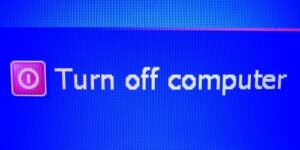
The Proven Success of Less: Opting for The Shorter Workweek
As we reinvent work in the post-pandemic world, can we see finally see the benefits of a shorter workweek? Americans work harder than their counterparts

As we reinvent work in the post-pandemic world, can we see finally see the benefits of a shorter workweek? Americans work harder than their counterparts

Remote work isn’t new. In fact, working from home been on the rise since 2010. But this new decade brought with it COVID-19, triggering a

A lot has been said about stress in the workplace over the years, and for good reason. Stress takes a serious toll on employees, both

We live in a world that is constantly in “on” mode. Smart phones, computers, emails, and phone calls; even after you clock off from work,
Undoubtedly, a sense of well-being is one of the precious joys of living. It’s foundational to who we are and what we do. This important
Keeping employees focused and productive can be a challenge for many companies. The amount of research that’s been conducted around this topic has grown exponentially
It’s that time of year again: Fourth quarter results are almost finalized, companies are wrapping up contracts, evaluating the successes of the past year, and
Work can push all our stress buttons: the need to achieve, fear of failing, reliance on others for our own success, overload, self-doubt and more.

What’s the business value of positive psychology? Research suggests that it could be much more powerful in driving workplace performance than we think

When disaster strikes in today’s “always on” world, chances are that you’ll hear the news immediately at work. How can you and colleagues maintain balance and stay productive?

Grand as it may be, today’s “always on” connectivity experiment is taking a toll, and business leaders are just starting to respond. But how can we help ourselves?

Is “vacation” a vanishing breed? Even when we’re able to get away from work, our connections follow us. How can we disconnect and de-stress in a world that’s always “on”?
Workplace stress – old rules – and new ways to cope. 5 guidelines for today’s professionals…